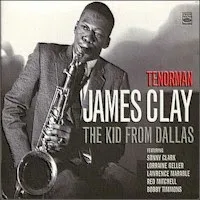Styles: Vocal
File: MP3@320K/s
Time: 55:36
Size: 128,7 MB
Art: Front
(5:48) 1. I Can See Clearly Now
(4:18) 2. Jolene
(4:42) 3. If You Could Read My Mind
(4:36) 4. Vincent
(4:32) 5. Every Breath You Take
(4:56) 6. The First Time Ever I Saw Your Face
(4:31) 7. You Belong To Me
(4:04) 8. We've Only Just Begun
(4:54) 9. This Girl's In Love With You
(4:42) 10. Do That To Me One More Time
(4:16) 11. Lean On Me
(4:11) 12. The Water Is Wide
Nicki Parrott, an internationally acclaimed bassist, arrived in New York in May of 1994, the recipient of a grant from the Australia Council for the Arts allowing her travel to the US and study with her mentor, one of the world’s premiere double bassists, Rufus Reid. In the same year she was also nominated for the “Australian Young Achievers Award”.Today, Nicki Parrott is a world-class double bassist and an emerging singer/songwriter. In her work with artists from around the globe she has brought a signature sound to every bass part she has played. She performs regularly at the world’s best Jazz Festivals and can be seen Monday’s at the Iridium Jazz Club in New York City with the legendary guitarist and inventor, Les Paul. Since June of 2000, this union has been an ideal showcase for her musical abilities, flair for improv, and gift for entertaining a crowd.Born in Newcastle, Australia, Nicki Parrott began her musical training on the piano at the age of four. She also took up the flute and continued to play both instruments throughout her school years. At the age of 15, Nicki switched her focus to the double bass, formed a band with her older sister Lisa (alto sax) and began composing instrumental pieces that they would eventually record for their premier CD release, The Awabakal Suite (2001).
After completing high school, Nicki moved to Sydney and attended the New South Wales Conservatorium of Music, where she graduated with an Associates degree in Jazz Studies. When bassists such as the legendary Ray Brown (Dizzy Gillespie, Ella Fitzgerald, Duke Ellington, Oscar Peterson) and John Clayton (Diana Krall, Whitney Houston) were playing in town, Nicki would find them, contact them and arrange lessons from them. She was awarded a scholarship to the prestigious Pan Pacific Music Camp, and soon after, took first place in the 1992 Jazz Action Society's Annual Song Competition for her composition, Come and Get It.In 1990, Nicki began touring Australia with Russian musicians Daniel Kramer and Alexander Fischer playing sold out shows across the country. This was followed by successful tours with American trumpeters Bobby Shew and Chuck Findley. When she was off the road, Nicki was consistently playing bass with other world-renowned jazz musicians like New Zealand’s Mike Nock (piano), Australia's Dale Barlow (tenor sax), Paul Grabowsky (piano), Bernie McGann (alto sax) and the explosive Ten Part Invention.
In May of 2002, The Nicki and Lisa Parrott Quartet headlined the prestigious Mary Lou Williams Jazz Festival held at the Kennedy Center in Washington D.C. The show was broadcast on NPR and was well received by the press. She was also the resident bassist with the Kitchen House Blend, a house band that premiered and performed new music from local New York composers. They would blend jazz, hip-hop, classical and rock in one evening...“It was a very creative experience”.Nicki expanded her musical repertoire and appeared on the Broadway stage in such shows as: Imaginary Friends, You're a Good Man Charlie Brown, Summer of '42, and Jekyll and Hyde. She is still active on Broadway today and regularly performs in the comedic musical, Avenue Q.
Since coming to the United States Nicki Parrott has performed and/or recorded with such notable musicians as Randy Brecker, Skitch Henderson, Jose Feliciano, Rebecca Paris, Bucky Pizzarelli, John Pizzarelli, Warren Vache Jr., Clark Terry, Michel Legrand, Billy Taylor, Dick Hyman, Patti Labelle & the New York Pops Orchestra, Annie Ross, the Florida Pops Orchestra, Terri Thornton, Holly Hoffman, DIVA, Marlena Shaw, Monica Mancini, Patrice Rushen, Harry Allen, Red Holloway, Kenny Davern, Mike Stern, Bernard Purdie, John Tropea, David Krakauer, Howard Alden, Randy Sandke, Greg Osby, Jack Wilkins, Ken Peplowski, Johnny Frigo, Joe Wilder, Houston Person, Wycliffe Gordon, Rachel Z and Johnny Varro.
Nicki has also performed at most of the world’s major jazz festivals. In the United States she’s appeared at the Newport Jazz Festival (2005), the Litchfield Jazz festival (2005), the Jazz in July concert series at the 92nd street Y (2003, 2004), the Detroit Jazz Festival (2005) and the Lionel Ha mpton Jazz Festival (2001). Outside the USA Nicki has appeared at the Cully Lavaux Festival (Switzerland - 1995), the Grimsby Jazz Festival (UK - 1996), Berlin Jazz Festival (Germany - 1998), the Ottawa Jazz Festival (2004), the Krakow Music Festival (Poland), JazzAscona (2005, 2006), Bern Jazz Festivals (Switzerland - 2005, 2006), Edinburgh Jazz & Blues Festival (UK - 2006) and of course, she has played at numerous music festivals across Australia. Nicki Parrott is committed to the continuing musical education women receive in order to further their careers and ultimately remain active as musicians past their teen years. In keeping with her sense of community, Nicki’s desire is to teach underprivileged kids to play instruments and learn to enjoy music. It is her belief t hat teaching music to children helps keep them interested in school and out of trouble. https://musicians.allaboutjazz.com/nickiparrott
Nicki Parrott loves old pop songs with good lyrics and good melodies and decided to feature them into this jazz setting.
Personnel: Nicki Parrott (vocal); Larry Fuller (piano); Lewis Nash (drums); Harry Allen (tenor sax); David Blenkhorn (acoustic and electric guitars)
If You Could Read My Mind




















